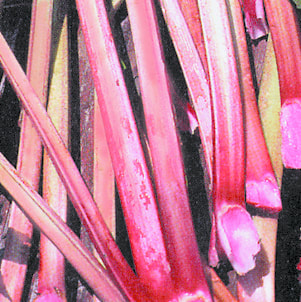- Perennial Vegetables
- >
- Perennial Vegetable Seeds
- >
- Victoria Rhubarb
Victoria Rhubarb
Perennial, zones 4-8. ( Can be grown as an annual in zones 9 & 10.) Rhubarb is grown for it's big leaf stems, which are sour and are typically used as a fruit substitute in pies, cakes, compotes, and jam. Rhubarb-ginger jam is a delicious English tradition on scones or toast. I like to use rhubarb in savory dishes as well, instead of lemon or vinegar in barbecue sauce or hot and sour soup. An early-spring treat, often the first harvest from the garden. Stop harvesting in June to let the plant build up strength for next year. Eat the leaf stems only. The leaves are poisonous.
To grow rhubarb from seed, soak the seeds a few hours and sow in deep pots, two to a pot. (the plant is taprooted). Keep them in bright light and room temperature. Plant in well-composted soil when they have 6 leaves or so. Site the plants so that they have good drainage and the crowns are up on a slight mound. This is a plant of northern forest soils, which are cool, full of organic matter, moist, but have no standing water. Provide shade all afternoon where summer temps are above 80. Under a deciduous tree is perfect. Rhubarb is a heavy feeder, traditionally planted over buried fish waste, manure, or other nitrogen source. If you don't do that, fertilize monthly with something like fish emulsion. Do not harvest the first year if you live in zones 4-8. In zones 9-10, sow in October, and harvest all of the stalks in May. 30 seeds

